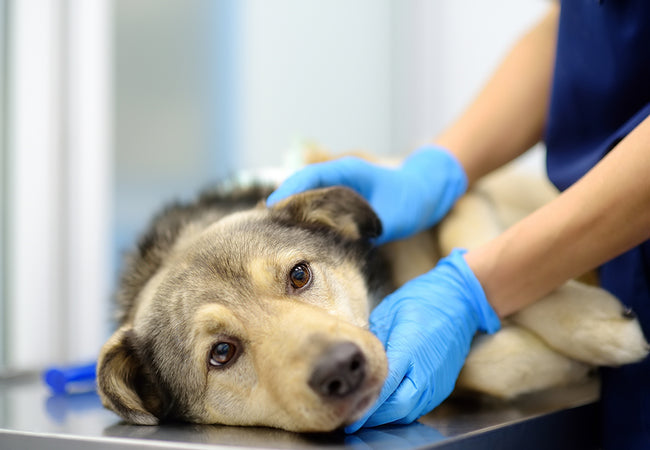Urinary Tract Infections in Dogs: Veterinary Guide & Care Tips 2025 🩺🐾

In this article
Urinary Tract Infections in Dogs: Veterinary Guide & Care Tips 2025 🩺🐾
By Dr. Duncan Houston BVSc
Hello, I’m Dr Duncan Houston BVSc, veterinarian and founder of Ask A Vet. In this 2025 canine wellness guide, we're exploring one of the most common and discomforting issues dogs face—urinary tract infections (UTIs). From identifying symptoms and understanding causes to professional diagnosis and home care, this in-depth article equips you with everything you need—plus support from Ask A Vet, to keep your pup comfortable and healthy. Let’s dive in! 💙🐶
1. What Are UTIs in Dogs? 🤔
UTIs in dogs typically involve bacterial infection of the lower urinary tract—primarily the bladder (cystitis), sometimes spreading to the kidneys (pyelonephritis). They are clinically significant and rarely resolve on their own .
“Dogs with UTIs generally attempt to urinate frequently painful” .
2. Which Dogs Are Most at Risk? 🐾
While any dog can get a UTI, risk is higher in:
-
- Female dogs: shorter urethra allows easier bacterial access .
- Senior or immunocompromised dogs (e.g., with diabetes, Cushing’s) .
- Dogs with urinary tract issues: stones, crystals, anatomical abnormalities .
- Poor hygiene or anatomy: hooded vulva, skin folds, long hair; also prostatitis or catheter use .
3. Recognizing the Signs 🕵️♂️
Common symptoms include:
-
- Frequent urination, often with small amounts
- Straining or discomfort during urination (dysuria)
- Hematuria (pink/cloudy/bloody urine)
- Accidents in the house by otherwise toilet-trained dogs
- Excessive genital licking
- Strong odor in urine
- Lethargy, loss of appetite, fever, vomiting — signs of ascending or severe infection
4. When It Becomes an Emergency 🚨
UTI-like symptoms alongside these more concerning signs require urgent veterinary attention:
-
- Straining with no urine output—possible blockage
- Persistent vomiting, collapse, or systemic illness
5. Professional Diagnosis 🔬
5.1 Urinalysis & Culture
-
- Microscopic exam reveals bacteria, white cells, red cells, crystals .
- Culture + sensitivity testing guides antibiotic selection .
5.2 Blood Tests & Imaging
-
- CBC and chemistry to assess kidney health; imaging (X‑ray, ultrasound) to check for stones, mass, or blockage .
6. Treatment & Veterinary Care 🏥
6.1 Antibiotic Therapy
UTIs require a full course of prescription antibiotics. Commonly effective drugs include amoxicillin, cephalexin, or trimethoprim-sulfa .
6.2 Supportive & Adjunct Treatment
-
- Pain relief: NSAIDs, tramadol, gabapentin
- In severe cases: IV fluids, catheter relief, hospitalization
- Address underlying conditions: stones removal, surgery for anatomical defects
“UTIs are treated with antibiotics…pain or difficulty while urinating, bloody or cloudy urine” .
7. Follow-Up & Prevention 🛡️
-
- Recheck urine 7–10 days post-treatment with culture to ensure resolution .
- Prevent recurrence through:
- Ample fresh water and frequent potty breaks
- Proper genital hygiene and grooming, especially in females
- Address anatomical issues like hooded vulva
- Monitor underlying illnesses (e.g., diabetes, Cushing’s, prostatitis)
- Home urine testing strips can track pH or blood presence
- For chronic cases: long-term antibiotics, dietary support, surgery, or catheter care may be needed .
8. Owner Advice & Home Routine 🏡
-
- Observe bathroom habits: frequency, posture, accidents, stream, odor
- Keep the genitals clean post-urination
- Encourage hydration via wet food or fountains
- Maintain grooming to prevent bacterial buildup
- Note any recurrence of signs during antibiotic therapy
9. Tools from Ask A Vet💡
-
- Ask A Vet: Telehealth triage, treatment plans, follow-up check-ins
10. When to Contact the Vet Immediately 🚨
-
- Straining for over a few minutes with little or no urine output
- Red or painful urine, accidents, or dribbling
- Decrease in appetite, vomiting, lethargy, fever
- Known chronic UTI in a dog with health issues—prompt recheck is key
11. Final Thoughts 📝
Urinary tract infections are common but treatable—when caught early with professional care, most dogs recover fully. Empower yourself through observation, timely diagnosis, thoughtful prevention, and supportive tools from Ask A Vet. Your proactive partnership will keep your pup safe, comfortable, and UTI-free in 2025. 🐾💙
If your dog shows urinary symptoms—or you’re managing recurrent UTIs—schedule a telehealth consult now at AskAVet.com and download our app for support, reminders, and professional guidance anytime. 🌟






